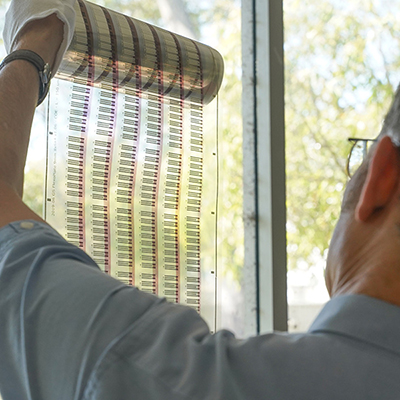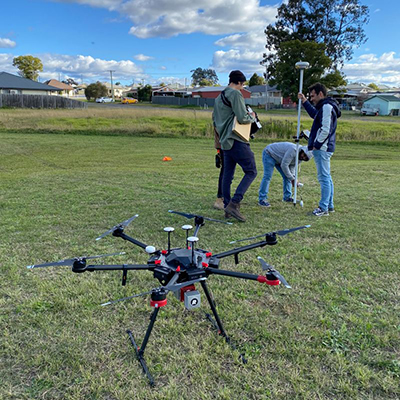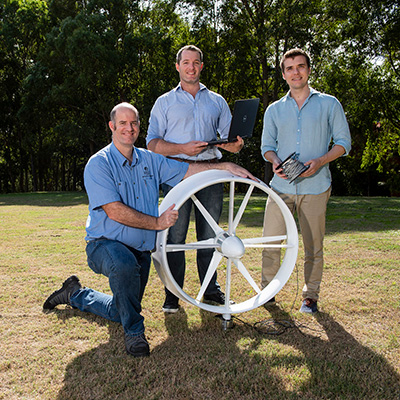For this edition, we look closer to home and uncover some amazing innovations happening right here in the City of Newcastle.
At The Brand Pool we are always looking for the latest innovations to unfold across the marketing industry as well as health, technology and other areas. Based in Newcastle, we especially enjoy seeing the innovations being created and developed in our town, and today we would like to highlight just a few.
“The City of Newcastle is undergoing a transformation from its coal and steel roots to a more sustainable, innovative and diverse future, with the region well on the way to becoming one of Australia’s largest innovation hubs.”*
Needle-free Diabetes Test

The University of Newcastle have recently developed a world-first, pain-free diabetes test. The biosensor strips, coated in a natural enzyme, interact with saliva to produce a reaction which generates an electrical current. This current can be detected and measured to reveal highly accurate glucose levels. The saliva tests makes painful finger-prick testing for diabetes obsolete, marking the first major innovation since blood glucose tests were developed in the 1960s.
Tests could soon be in the hands of consumers after $6.3 million in funding was given to establish the first manufacturing facility for the device, a welcome thought for over 460 million people living with the condition globally.
Funded under the Medical Products priority of the Australian Government’s Modern Manufacturing Initiative, the world-class facility will help transition 20 years of research from the lab to shelves. University of Newcastle physicist and research leader, Professor Paul Dastoor said a purpose-built manufacturing facility in the Hunter is underway. “Construction will begin on the facility this year, with the first devices due to roll off the production line by 2023.”
As well as testing for diabetes, the sensor could be developed across 130 indicators including allergens, hormones and tumour markers. It could also assist with new diagnostic tests currently needed to eradicate COVID-19.
The Wine Provenance Project

Boasting collaboration from a cross-disciplinary team of researchers from the University of Newcastle, and members of the wine and labelling industries, this project will provide much-needed insights. The project is unique, helping exporters build their brands overseas using blockchain, unveiling findings into how brands can leverage new technology to improve product quality guarantees and marketability.
The Wine Provenance Project will provide new data on the effectiveness of blockchain provenance technologies to enhance customer engagement and investigate what product information customers want. Insights into consumer behaviour will also be explored, assessing whether provided information influences purchasing behaviour and consumer trust in technology.
Food and consumer behaviour expert, Dr Tamara Bucher, believes the project will help Australian exporters build their brand overseas. “It’s important that blockchain technology is studied from the consumer perspective to give businesses valuable insights on marketing and anti-counterfeit”.
Researcher at The University of Newcastle, Professor Lisa Toohey, says when paired with other technologies such as smart labelling and virtual reality, blockchain tags could be used to enhance customer experience and provide consumer protection and assurances of authenticity. “With travel restrictions meaning that international tourists can’t travel to Australian vineyards, it’s more important than ever to ensure authenticity of the high-quality Australian wines on offer.”
Drone Technology to predict risk of water loss

There’s no doubt that leaking water pipes have a poor impact on the environment and cost both water authorities and consumers time and money. Researchers at The University of Newcastle are playing a significant part in solving this issue by developing drone technology to help predict which areas, and which specific pipes, are at risk of water loss due to corrosion.
Until recently the risk of degradation of the underground water supply network was assessed based on knowing the age of the cast iron pipes and the amount of moisture in the ground. However, Associate Professor In-Young and Professor Rob Melchers from The University of Newcastle’s School of Engineering, alongside PhD student David Bretreger, are currently developing and testing a new technique.
LiDAR (Light Detecting and Ranging) is a remote sensing method which uses a pulsed laser to measure ranges (variable distances) to the Earth. Professor In-Young explains: “By attaching a device called a LiDAR to a drone we can accurately see where the lower lying areas are, and where land is not covered by buildings or concrete, we can also tell how wet the ground is.”
The LiDAR soil moisture and corrosion investigation is part of a larger ‘innovative smart water management’ project, led by Sydney Water. Professor In-Young sees the emerging techniques and technologies eventually being implemented for applications such as monitoring wetlands and managing irrigation.
Doubling wind turbine efficiency

Three local Novocastrian engineers, Joss Kesby, James Bradley and Sam Evans have discovered a way to double the energy production of standard wind turbines. Based on research from the 1960s, they have uncovered a way to optimise the relationship between a turbine and a diffuser. Whilst most people can appreciate a normal open-bladed wind turbine, a diffuser augmented wind turbine has a cylinder around the blades which gives it an aerodynamic shape. This diffuser helps to draw more air through the turbine, making it more powerful.
The three have launched a new startup, Diffuse Energy, and have attracted support and funding from the State Government. Joss states, “we have been successful in our application to the NSW Government’s Minimum Viable Product (MVP) grant, which has allowed us to have all our manufacturing processes in place, so that once we’ve had a successful trial we can just press the go button.”
Currently the wind turbines are up to twice as efficient as other competitors and is quieter and safer. Diffuse Energy wants to attach their wind turbines to other renewable energy systems, allowing people to go completely off-grid or produce their own energy. There’s no doubt wind turbines are a small part of their future plans. They also want to expand into larger international markets and apply their design technology to other systems that use fluid (air or water) to rotate another system.
Source: *Innovation Aus, Australia’s ‘prototype’ for regional transformation, 2021, The University of Newcastle, 2021.

